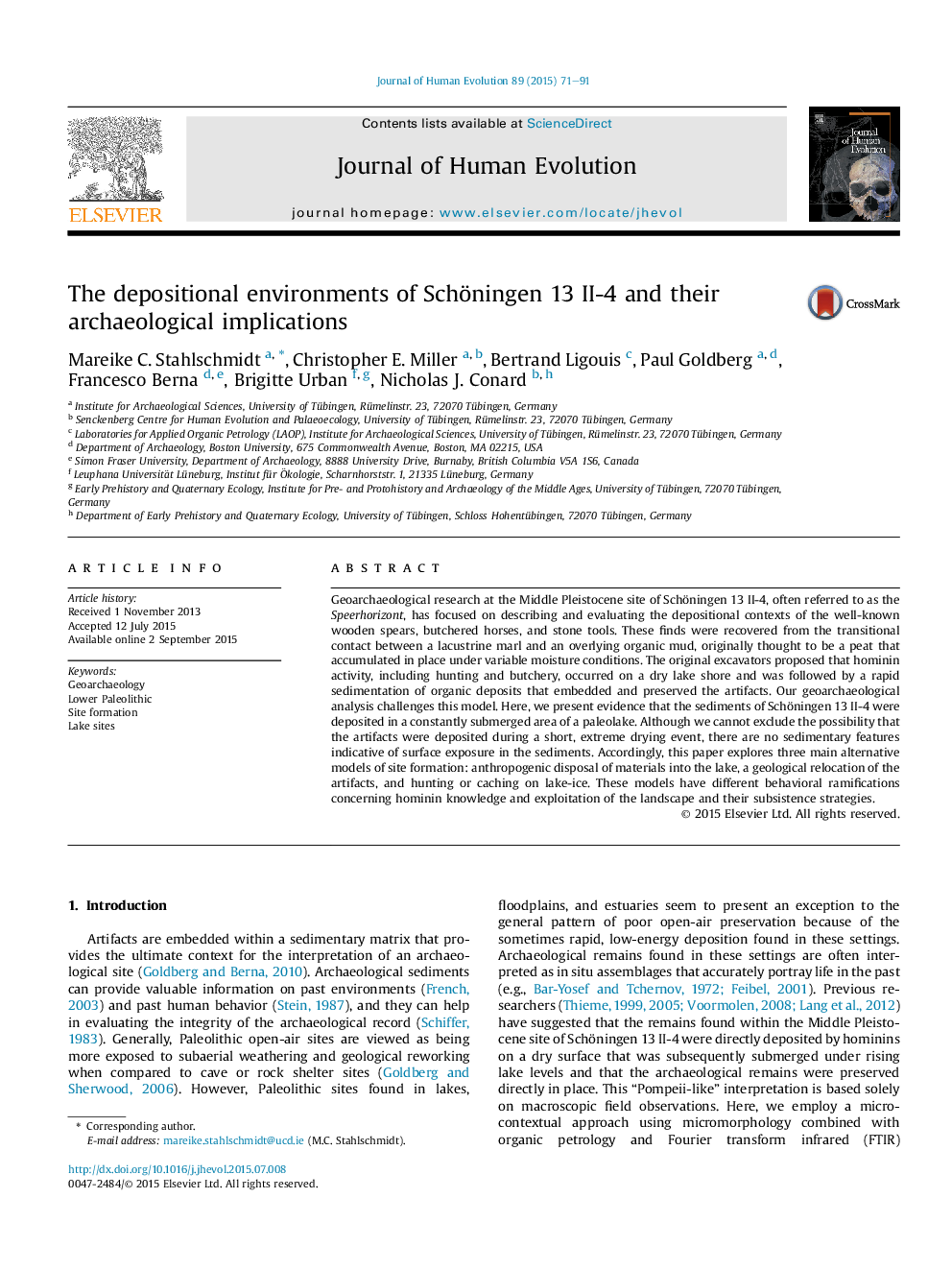| کد مقاله | کد نشریه | سال انتشار | مقاله انگلیسی | نسخه تمام متن |
|---|---|---|---|---|
| 4555904 | 1628160 | 2015 | 21 صفحه PDF | دانلود رایگان |

Geoarchaeological research at the Middle Pleistocene site of Schöningen 13 II-4, often referred to as the Speerhorizont, has focused on describing and evaluating the depositional contexts of the well-known wooden spears, butchered horses, and stone tools. These finds were recovered from the transitional contact between a lacustrine marl and an overlying organic mud, originally thought to be a peat that accumulated in place under variable moisture conditions. The original excavators proposed that hominin activity, including hunting and butchery, occurred on a dry lake shore and was followed by a rapid sedimentation of organic deposits that embedded and preserved the artifacts. Our geoarchaeological analysis challenges this model. Here, we present evidence that the sediments of Schöningen 13 II-4 were deposited in a constantly submerged area of a paleolake. Although we cannot exclude the possibility that the artifacts were deposited during a short, extreme drying event, there are no sedimentary features indicative of surface exposure in the sediments. Accordingly, this paper explores three main alternative models of site formation: anthropogenic disposal of materials into the lake, a geological relocation of the artifacts, and hunting or caching on lake-ice. These models have different behavioral ramifications concerning hominin knowledge and exploitation of the landscape and their subsistence strategies.
Journal: Journal of Human Evolution - Volume 89, December 2015, Pages 71–91